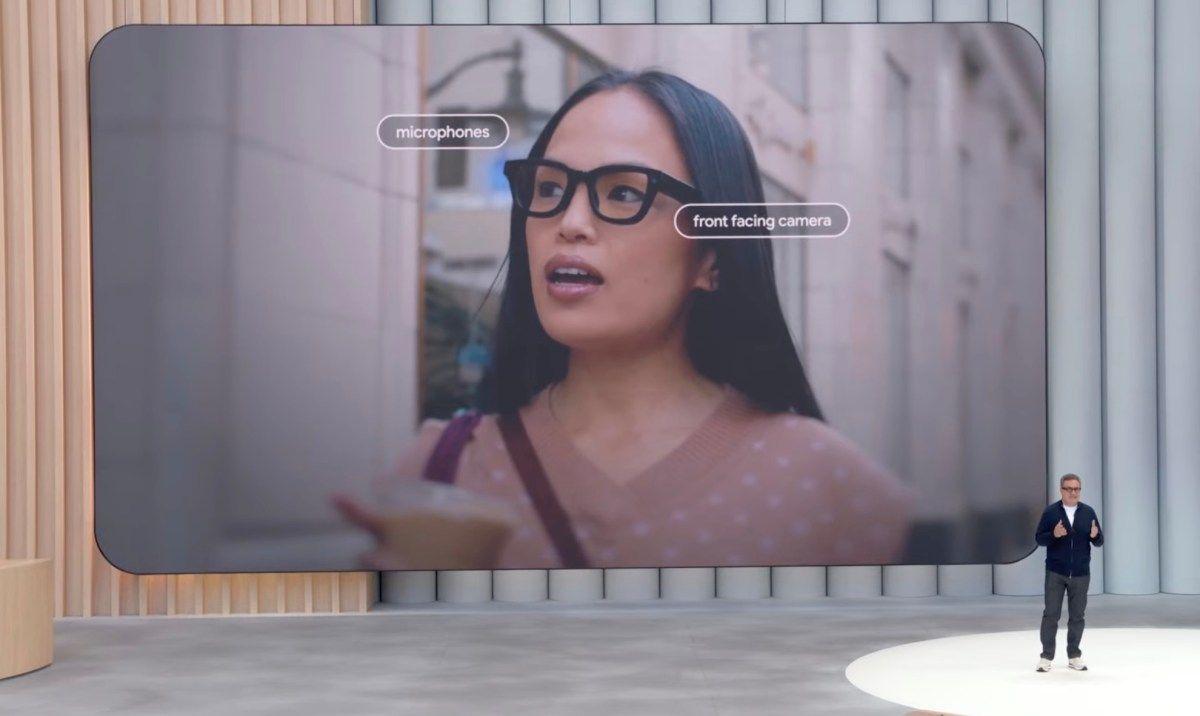AI Adoption in the Workplace: Widening Gender Gaps and Potential Consequences
2 Sources
2 Sources
[1]
Generative AI like ChatGPT is at risk of creating new gender gap at work
Job interview with futuristic cyborg.Gremlin | E+ | Getty Images Popular generative artificial intelligence tools such as ChatGPT can be a boon for productivity and efficiency. But in adoption of the technology at work, a significant gender gap threatens the widespread use of it. Technology and business leaders need to wake up to this reality or risk missing out on the potential benefits of AI for business, which include improved customer service, more efficient content creation, enhanced data analysis, and cost savings through automation. New research shows that women are considerably less likely than men to use ChatGPT. Why that is the case was not part of the research, but regardless, it's something senior technology executives including chief information officers and chief technology officers, as well as other C-suite leaders, need to be concerned about. "Recent studies have documented meaningful productivity gains from tools like ChatGPT," said Anders Humlum, assistant professor of economics at the Booth School of Business, University of Chicago. "The fact that women are significantly less likely to use these tools means they may be missing out on these benefits," Humlum said. For businesses, this represents both a lost opportunity to boost overall productivity and a potential driver of widening gaps between workers, Humlum said. In a survey of 18,000 workers from 11 occupations completed in 2024, researchers at the University of Chicago in collaboration with Statistics Denmark found that ChatGPT has been widely adopted in those occupations, with 41 percent of workers using it for job-related tasks. On-the-job adoption rates ranged from 65% for marketing professionals to 12% for financial advisors, and almost everyone in the survey was aware of the technology, according to the report. But when researchers looked at the demographics, they discovered that women were 16 percentage points less likely than men to use ChatGPT for job tasks, even when comparing workers within the same occupation and with similar job responsibilities. Research from professional services firm Deloitte also indicated a gender gap in generative AI adoption. Its analysis showed that women in the U.S. have been lagging in taking up the technology. In 2023, Deloitte said, women's adoption of generative AI was about half that of men. In 2024, the gap remained, although it was narrower. "Generative AI tools such as ChatGPT offer businesses the opportunity to streamline tasks and boost efficiency," said Ritu Jyoti, group vice president and general manager of AI and data market research and advisory services at International Data Corp. "However, concerns arise if there is a disparity in the utilization of these tools, particularly among women. This discrepancy could hinder businesses from fully capitalizing on productivity improvements across their workforce." The existing gender gap in AI adoption has the potential to exacerbate inequalities within the workplace, Jyoti said. "The essence of innovation lies in diverse viewpoints," she said. "If women do not have equal representation in the use of AI tools, businesses run the risk of missing out on novel ideas and solutions that emerge from a more inclusive approach."
[2]
How AI is making workplace gender gaps worse
Generative AI is radically reshaping the job market -- creating new roles, changing some, and phasing out others. But here's one effect of the transformative technology that's not as widely talked about: It's deepening long-standing workplace gender gaps. According to a recent report from the World Economic Forum and LinkedIn, women systematically face a two-part problem in the ongoing AI transformation. Relatively fewer women are currently in jobs that are being augmented by generative AI, and relatively more are in roles that are being disrupted. According to LinkedIn data for the US, 24.1% of men work in augmented occupations, while 20.5% of women do. At the same time, 33.7% of women work in occupations that are being disrupted, compared to 25.5% of men. Related research by LinkedIn shows that the pattern of men's higher representation in augmented roles holds for 95% of the 74 countries with available data. Examples of occupations that look set to be disrupted in the US include medical administrative assistant (91% female) and office manager (88% female). Augmented fields, meanwhile, include electrical engineer (94% male) and mechanical engineer (89% male). The data align with broader AI-related disparities in STEM education and employment. Already, too many women are lost in the transition from STEM degrees to their first job in the STEM workforce. Women who graduated in 2021 accounted for 38.5% of STEM graduates, but only 31.6% of STEM job entrants in 2022. This decline in representation continues across the hierarchy once women are in the workforce: in 2024, women held 29% of STEM entry-level positions and 24.4% of STEM managerial positions in STEM, but only 12.2% of STEM C-suite level roles. Women are also underrepresented in AI-related academic and leadership roles. To ensure that those who have the right skills have a fair chance to succeed and advance in the workplace, regardless of their gender, business leaders need to review and rethink their hiring practices, performance evaluation methods, and promotion processes. Generative AI itself can both help and hinder efforts to create a more level playing field. Relying on historical employment patterns to make predictions about future performance has too often overlooked women's potential to succeed in jobs where they have not traditionally been represented. On the other hand, using generative AI to predict future success based on current skills is a powerful way to deploy the latest technology to debias hiring processes and create a more level playing field.
Share
Share
Copy Link
Recent studies reveal a significant gender gap in the adoption of AI tools like ChatGPT in the workplace, potentially exacerbating existing inequalities and impacting overall productivity.

Gender Gap in AI Adoption
Recent research has uncovered a concerning trend in the workplace: a significant gender gap in the adoption of generative AI tools like ChatGPT. A survey conducted by the University of Chicago in collaboration with Statistics Denmark revealed that women are 16 percentage points less likely than men to use ChatGPT for job-related tasks, even when comparing workers within the same occupation and with similar responsibilities
1
.This disparity is not limited to a single study. Professional services firm Deloitte's analysis also indicated a gender gap in generative AI adoption. In 2023, women's adoption of generative AI in the U.S. was about half that of men, with the gap narrowing but still present in 2024
1
.Implications for Workplace Productivity and Equality
The gender gap in AI adoption has significant implications for workplace productivity and equality. Anders Humlum, assistant professor of economics at the University of Chicago's Booth School of Business, emphasized that this disparity could lead to women missing out on the productivity gains offered by tools like ChatGPT
1
.Ritu Jyoti, group vice president at International Data Corp., warned that this discrepancy could hinder businesses from fully capitalizing on productivity improvements across their workforce. Moreover, the lack of equal representation in AI tool usage may result in businesses missing out on novel ideas and solutions that emerge from a more inclusive approach
1
.AI's Impact on Job Market Dynamics
A report from the World Economic Forum and LinkedIn highlighted another concerning trend: women are systematically facing a two-part problem in the ongoing AI transformation. Relatively fewer women are currently in jobs being augmented by generative AI, while more are in roles being disrupted
2
.LinkedIn data for the U.S. showed that 24.1% of men work in augmented occupations, compared to 20.5% of women. Conversely, 33.7% of women work in occupations being disrupted, versus 25.5% of men. This pattern of men's higher representation in augmented roles holds for 95% of the 74 countries with available data
2
.Related Stories
STEM Education and Employment Disparities
The AI-related gender gap extends beyond tool adoption to broader disparities in STEM education and employment. Women who graduated in 2021 accounted for 38.5% of STEM graduates but only 31.6% of STEM job entrants in 2022. This decline in representation continues across the hierarchy, with women holding 29% of STEM entry-level positions, 24.4% of STEM managerial positions, and only 12.2% of STEM C-suite level roles in 2024
2
.Addressing the Gender Gap
To address these disparities, business leaders need to review and rethink their hiring practices, performance evaluation methods, and promotion processes. Paradoxically, generative AI itself can both help and hinder efforts to create a more level playing field. While relying on historical employment patterns may perpetuate biases, using AI to predict future success based on current skills could potentially debias hiring processes and create a more equitable workplace
2
.References
Summarized by
Navi
[2]
Related Stories
Recent Highlights
1
AI Chatbots Sway Voters More Effectively Than Traditional Political Ads, New Studies Reveal
Science and Research

2
Google AI glasses set to launch in 2026 with Gemini and Android XR across multiple partners
Technology

3
EU Launches Antitrust Probe Into Google's AI Training Practices and Content Usage
Policy and Regulation








